Jasminum Polyanthum Care: How To Grow Pink Jasmine
People love Pink Jasmine because of its strong, sweet scent and abundance of blooms. You may have seen it flowering like crazy around your town and are wondering how to grow it so that you, too, can enjoy that heady aroma. Good news: it’s easy to grow, and here you’ll find Jasminum polyanthum care tips.
What makes Pink Jasmine such a crowd pleaser is the masses of starry white blooms so thick you can barely see the dark green leaves. It’s a popular landscaping plant because it’s easy to find, fast-growing, and relatively low-maintenance. You’ll see it climbing trellises (which it quickly outgrows), scrambling over fences, walls, and arbors, and even winding up trees and phone poles.
Botanical Name: Jasminum polyanthum Common Names: Pink Jasmine, Winter Jasmine
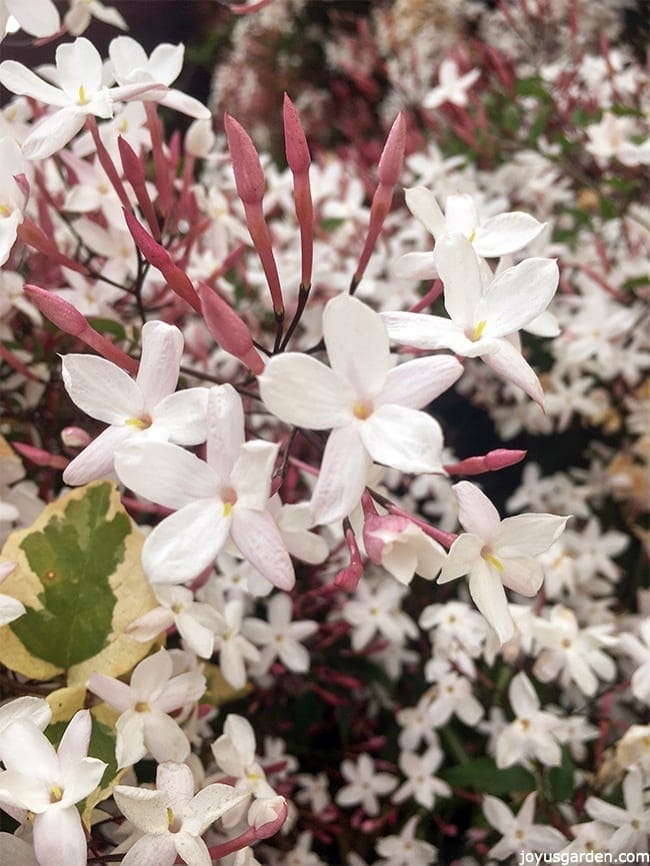
Jasminum Polyanthum Care & Growing Guide
Growing Zone
USDA hardiness zone 8 – 11. It has a cold tolerance to 10°F.
Enter your zip code to find your growing zone.
It’s an evergreen plant, but in climates on the colder end of that scale, it becomes semi-deciduous and starts dropping some leaves.
I used to live in San Francisco and Santa Barbara—great spots for growing Pink Jasmine. The California coast has cool temperatures and foggy mornings. Now I’m in Tucson, AZ, where it’s rarely planted. The intense summer heat, constant sun, low humidity, and lack of rain make it difficult to grow here.
What Type Of Climbing Vine is This?
This vine won’t attach itself on its own—it’s not a clinger like English Ivy. Since it’s a twining vine, you’ll need to provide support and do a little training to get it going on a wall, fence, or trellis.
Size
Pink Jasmine is no small-scale plant—it can grow up to 25′ and does so quickly and densely. It’ll grab onto anything nearby, so avoid planting it next to trees or shrubs unless you want it climbing all over them.
Since it’s such a vigorous grower, space multiple plants about 10′ apart to give them room to spread.
Growth Rate
This is a fast-growing vine with a vigorous growth habit.
Flowering
This is the big draw! To get lots of fragrant white flowers, give it plenty of sunlight, but avoid areas with hot, scorching sun, as the plant will burn. Pink Jasmine blooms only once a year in late winter to late spring. You might have an occasional bloom in the summer, too.
So, enjoy the heavenly scent of the blooms while they last. I love the beautiful flower buds in a pleasing shade of pink (hence the common name) and love how they look in arrangements and bouquets. This plant is also very popular with butterflies and hummingbirds.
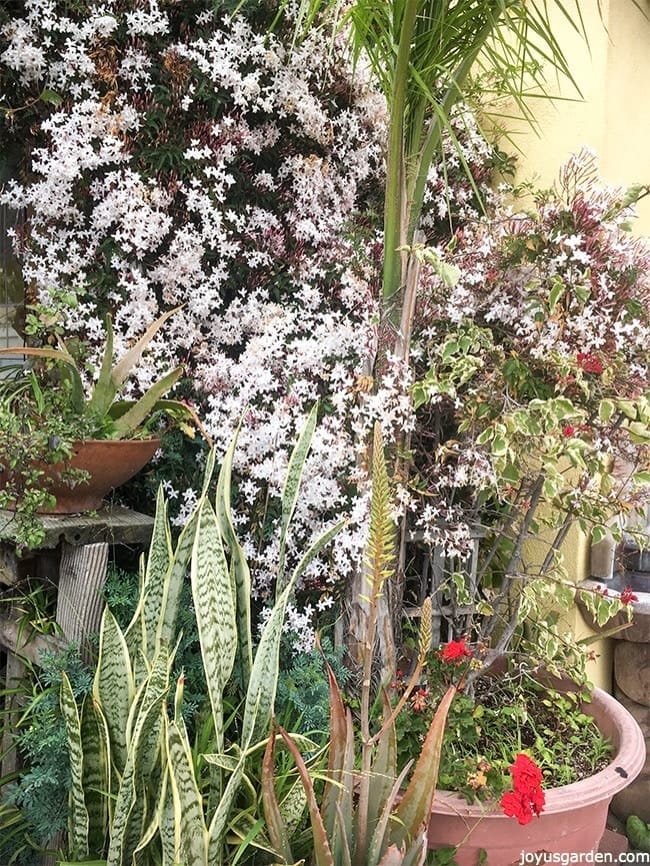
Light Requirements
Pink Jasmine needs at least 4–5 hours of direct sun a day. It’ll grow in shade, but will be leggy and won’t flower—not what we’re going for. Part sun is fine, as long as the light is bright.
On the coast, it can handle full sun. But in hotter, inland areas, it’ll need some protection or the leaves may burn—and you’ll be watering it more often.
If you’re in a colder coastal zone, planting it against a south- or west-facing wall can help give it a little extra warmth.
Watering
How often you water depends on your climate, rainfall, humidity, and soil. In general, Pink Jasmine likes regular watering. It can handle some dryness once established, but it’ll look better if you give it a deep soak every couple of weeks.
During the winter months, water less—when the soil starts to dry out. Like most plants, it needs less moisture in winter to avoid root rot (especially if your soil doesn’t drain well).
While it’s getting established—especially in the first year or two—water more often to help build a strong and healthy root system. That’ll make your vine more resilient in the long run.
Fertilizing/Feeding
Pink Jasmine isn’t fussy and doesn’t need much if it’s growing in nourished soil. I’ve found that a yearly dose of organic compost in late winter or early spring keeps it happy.
If you like to fertilize, do it at the beginning of the growing season in spring to boost growth and blooms. Use a balanced fertilizer like 10-10-10—but skip anything with too much nitrogen, or you’ll get lots of leaves and fewer flowers.
Soil
Pink Jasmine isn’t too fussy about soil, but good drainage is key. It does best in loose, well-draining soil—loamy soil is ideal because it holds moisture without becoming soggy. If your soil has too much clay, you’ll need to lighten it up. I plant just about everything with a generous dose of compost, and Pink Jasmine appreciates the extra nourishment.
If you’re growing it in a container, use a high-quality organic potting mix that drains well. You can add a bit of perlite or pumice to improve aeration if need be.
Planting/Transplanting
Planting or transplanting is best done in spring and summer. Into early fall is fine if you’re in a temperate climate. Make sure the plant is well watered, dig a hole twice as wide as deep, amend with organic matter, loosen the root ball if it is tight, and thoroughly water after planting.
Training
This vigorous climber needs something sturdy to grow on—like a large trellis, arbor, chain link fence, or wall-mounted support system. To get it started, tie the main stems in place using twine, plant ties, or garden tape. Once it gets going, the vine will begin twining and climbing on its own.
Pruning
Pink Jasmine is a fast and dense grower, so pruning is a must to keep it in check and looking good. The best time to prune is after it flowers, in late spring or early summer. You might need to trim it two or three times a year, especially if it’s growing like crazy. Always use clean, sharp pruners to avoid damaging the plant.
This vine tends to grow back on itself and can flop over if it has nothing to cling to. In some cases, it’ll even smother itself, and you’ll have to cut it way back to revive it. To avoid that, stay on top of light trimming throughout the season.
The masses of pretty blooms don’t last forever, and once they’re done, they can make the plant look messy. A good post-bloom pruning helps tidy it up and encourages fresh new growth. I also give the plant a gentle shake to knock off any spent flowers I can reach.
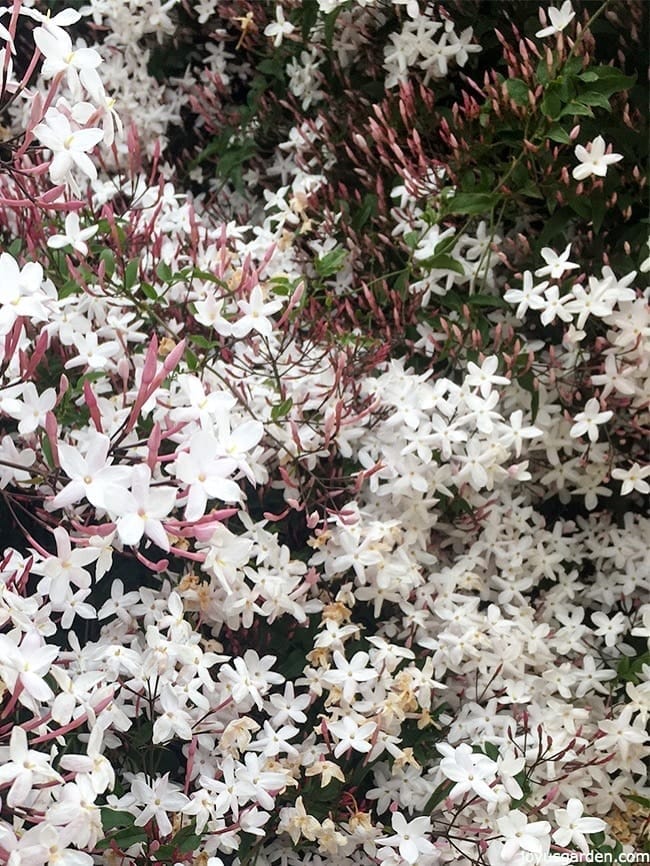
Pests
I haven’t seen Pink Jasmine bothered by many pests. Aphids can show up in spring on the tender new growth, but they’re easy to knock off with a blast from the garden hose. If mealybugs or spider mites make an appearance, you can treat them with insecticidal soap or neem oil.
In Containers
You can grow Pink Jasmine as an outdoor container plant. If you go this route, make sure to choose a pot with drainage holes that gives the roots plenty of room to spread. Use a high-quality potting mix, and if you’ve got some on hand, mix in a bit of organic matter like compost to give it an extra nutrient boost.
As it grows, it’ll eventually need a larger pot—this vine can quickly outgrow its pot as the roots fill up the space.
You’ll often see Pink Jasmine sold as a flowering indoor plant, trained to grow around rings or globes. I’ve used it for weddings and parties where it adds a romantic, fragrant touch—but I haven’t kept one indoors long-term.
It’s also sold in hanging baskets, which can work well for a season or two. After that, it’ll outgrow the pot and need to be transplanted into something larger.
Jasminum Polyanthum FAQs
Is Pink Jasmine the same as Star Jasmine?
No. There are many different types of jasmine plants, and these two sometimes get confused. Both are popular landscape plants.
Star Jasmine (Trachelospermum jasminoides) isn’t a true jasmine. Even though it has similar-looking and smelling flowers, the foliage is dark, glossy green, and has a less vigorous, different growth habit. You can see it pictured above. Pink Jasmine (Jasminum polyanthum) is a true jasmine.
Can Pink Jasmine be grown indoors year-round?
This isn’t an indoor jasmine—it might survive short term, but it does best in outdoor gardens. Plus, it needs cool temperatures to set flower buds, and we usually have the heat cranked up in winter.
Why isn’t my Pink Jasmine vine blooming?
One reason is not enough light. This plant needs bright light and at least four hours of sun per day to bloom. Other reasons include fertilizer with too much nitrogen, improper pruning, and the plant may be too young. It also needs cool temperatures at night to set the flower buds.
Can Pink Jasmine become invasive?
Yes, this fast-growing vine can become invasive in some climates. Prune it regularly to avoid this.
Conclusion: Who can resist a plant that gets covered in blooms and fills the air with stunning fragrance? With these Jasminum polyanthum care tips, you’ll be enjoying your own lush jasmine vines in no time.
Happy gardening,

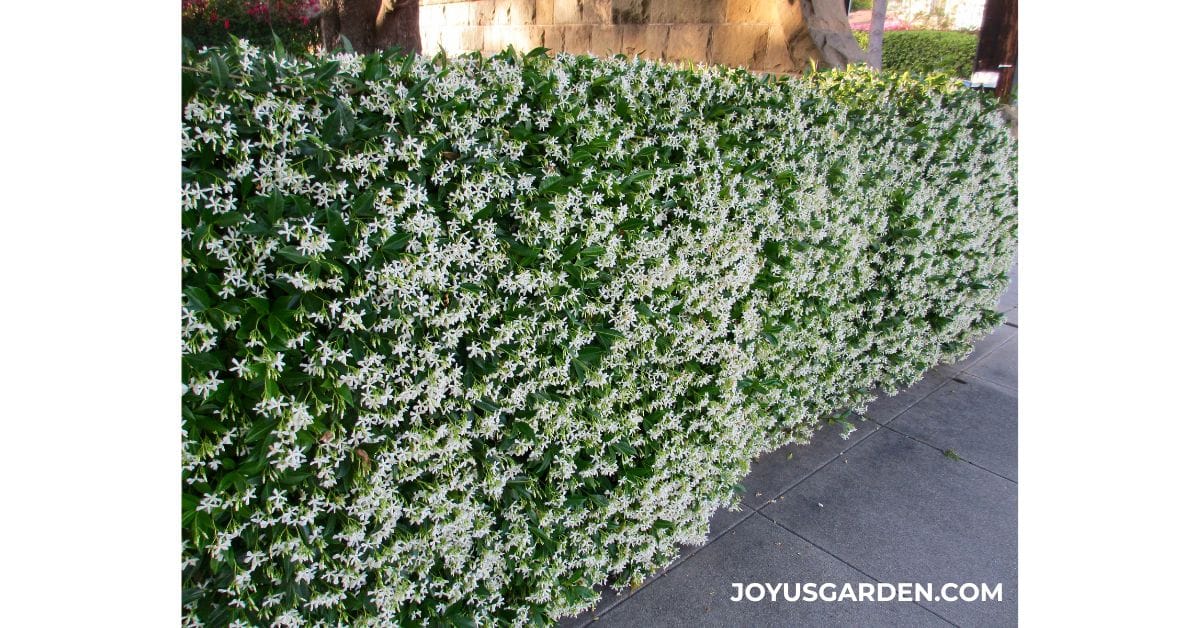

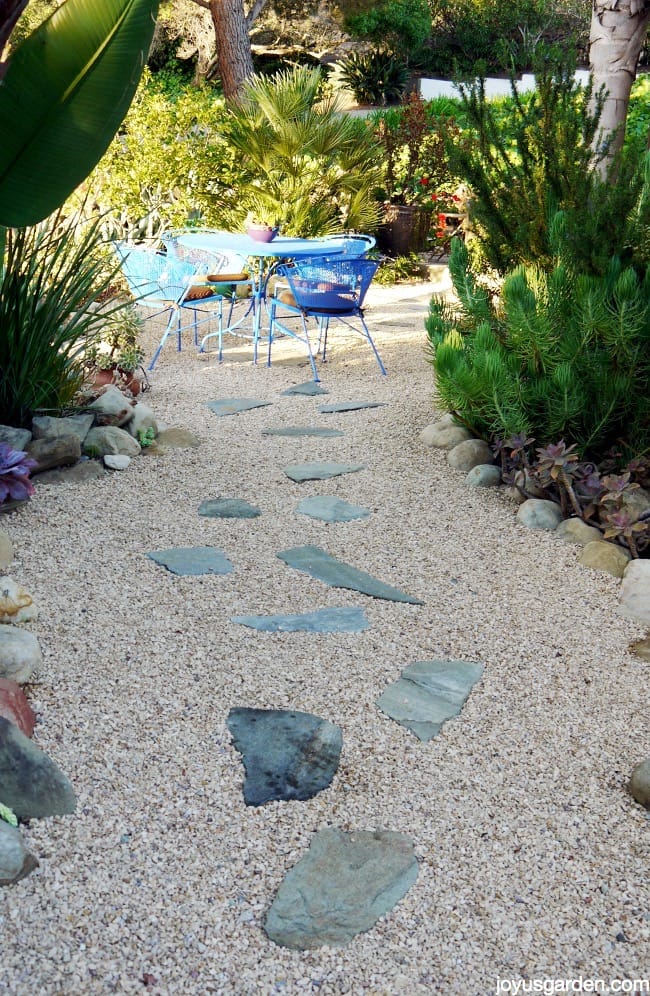
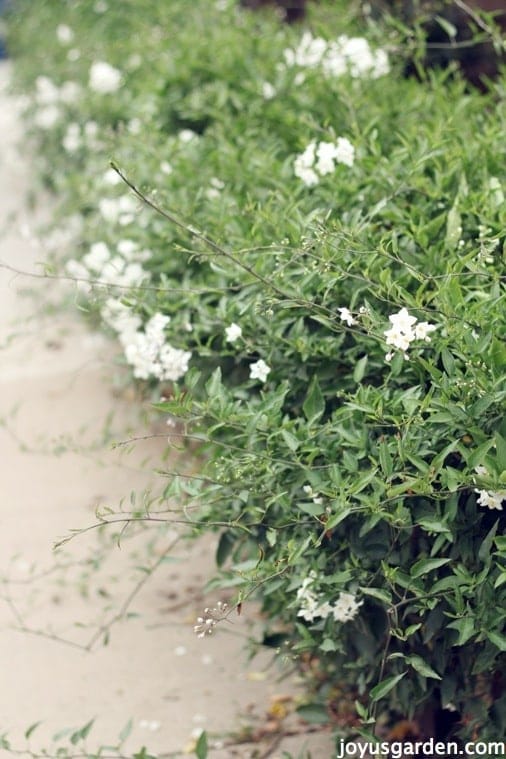

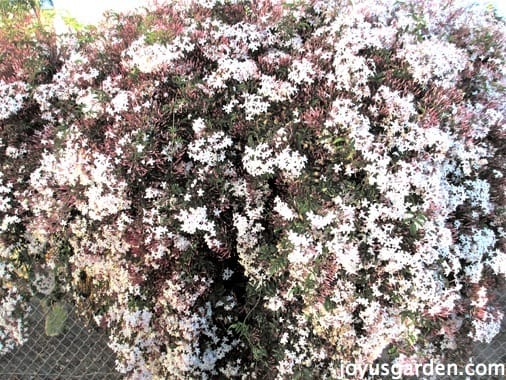
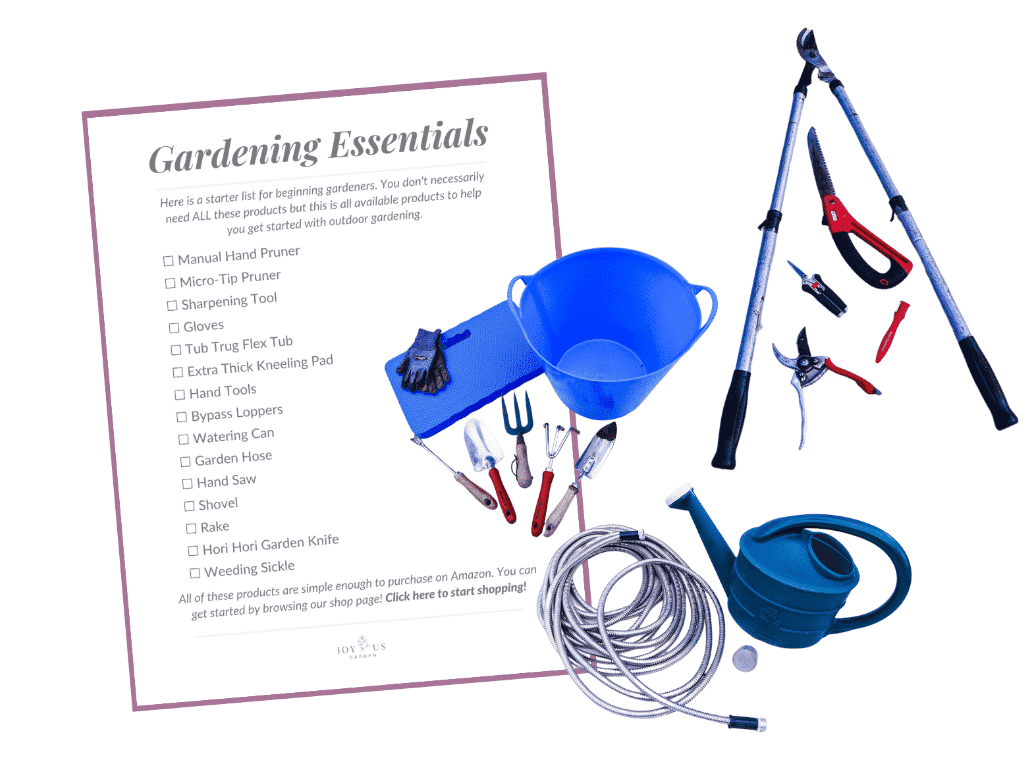
where could I buy a pink jasmine?
Hi – It depends on where you live. I live in Tucson & they’re sold at all nurseries & big box stores too. They may be sold as a houseplant in your area. There is a seller on Etsy who offers them in 4″ pots so you could check that out. Nell
Hi. I am planting this jasmine against a fence. Given how densly it grows, what distance from the fence should I plant it? Thank you.
Hi Annette – I always planted it about a foot away from the fence. Like with any vine, I angle the plant towards the fence, trellis or means of support so you can easily train the top part to attach. Nell
What state are you located in
Hi Karen – I lived in CA for 30 years & moved to AZ 1 1/2 years ago. Nell
Walking into Ralph’s grocery store in san diego i was hit with the wonderful smell of Jasmine. I put it in my cart! It’s a polyanthus. Going to plant close to window so smell comes in!
Kathy – They bloom in the late winter/early spring in Southern CA so you find them in abundance at this time of year. The scent is sweet indeed! Nell
Our Jasminum Polyanthum looks very sad at the moment, some green leafs still on some stems,
but there is a lot of down leafs and stems, do we did to cut these off? Or do we cut it right back ?.
We have had a very cold spell, as most gardeners most have had.
Hope you can help us, we planted this last years it is a new plant.
Thank you
Hi Muriel – JP is hardy to around 20F. I’m not sure what you mean by down leaves & stems … dead? If the stems look dead, you’ll have to cut back. Nell
Hi! Great article. I live in South East Spain, gardening zone 10a. I’ve just bought a jasmine polyanthum and was thinking of growing it up a trellis on my East facing kitchen wall. Because of the mass of the house it would be in shadow from around 2 pm in summer and from around 12noon in winter. Would this be enough sunshine for it to bloom? Or would I be better putting it against a south west facing wall? I was a little concerned that south west might be too hot in the afternoons.
Hi Elaine – JP will burn in all day hot sun. Conversely, it’ll grow in the shade but be leggy & won’t bloom. 4-5 hours of sun a day is best, definitely not a SW exposure. Nell
Hi Nell! We live in La Crescenta, CA. I have a chain link fence that gets afternoon sun. I’d love this fast-growing, showy Pink. Do you think it will do ok with the afternoon sun? (Our neighbor’s side is to the West, so I’m thinking it might get scorched a bit on their side…) Thanks!
Hi Sue – I’m not familiar with the climate/sun intensity in La Crescenta. JP does best in 4-5 hours of sun a day & will burn in hot afternoon sun. It grows beautifully along the coast in the Bay Area, San Diego & around Santa Barbara. I’ve only seen a few here in Tucson but they’re growing in a north exposure. Nell
Will I be able to grow this in southern Illinois? I want it outside. Not really in a pot to bring in for the winter.
Hi Amy – This plant is hardy to 15F. No – you have to bring it indoors or grow it as an annual. Nell
Hi Nell,
I have mine in a container on the roof, and after reading your comments above, I think it is getting too much afternoon sun. I live outside of Los Angeles on the coast. It looks generally unhealthy, besides having some dry, burned leaves. The unburned leaves are a splotchy light green, the way heavy feeders get when it’s time to fertilize. Do you think this might just be general stress from too much sun?
Hi Ev – Yes, I’ve found that Pink Jasmine doesn’t like the hot, afternoon sun. It could also be drying out in the pot &/or getting too much wind. Nell
I live in Dallas just purchased a pink jasmine vine I want to move it into a pot any advice
James – They do fine in pots & transplant well. Use a well drained rich mix. How big a pot you get depends on the size of the plant. Nell
I live in the Oklahoma City Metro Area, Zone 7. I mentioned to my mom that I was thinking about planting some Jasmine; I was intending to buy something hardy to zone 7. However, my mom went to Home Depot and purchased two Jasminum Polyanthum plants and gave them to me as a gift. I planted them today. Do you think I will be able to keep them alive through the winter? Or should I bring some of it inside in pots for the winter? Or should I give up and plant a hardier variety of jasmine next spring?
Robin – They’re hardy to zone 8. Jasmine can be tricky to keep alive indoors. You can look into Hardy Jasmine & Winter Jasmine. Nell
Hi – this is so helpful. Thank you!
I have some of this in my backyard and I’m now realizing it is growing all over a tree I have. Should I prune this? Should I just cut it all away from the tree?
Karen – You’re welcome! Depending on the type & size of the tree, it could eventually smother out some of the foliage. Nell